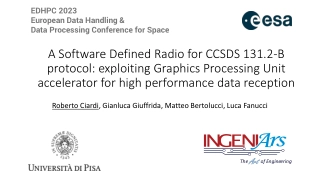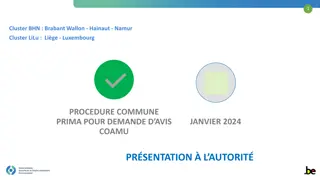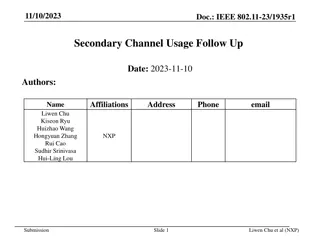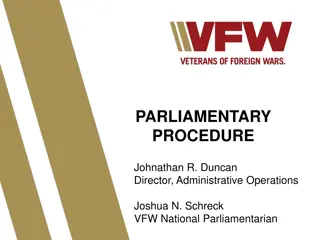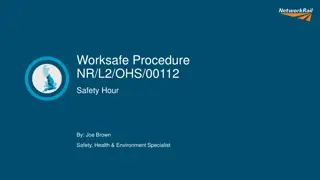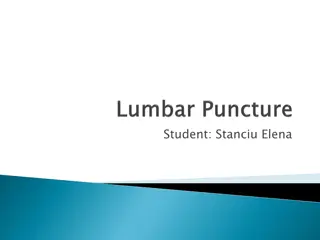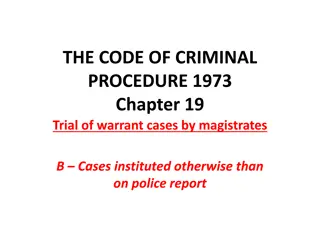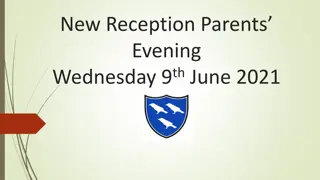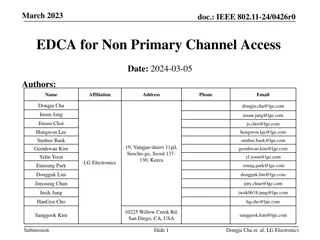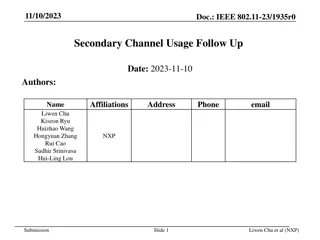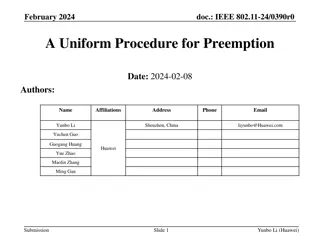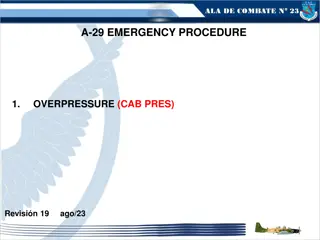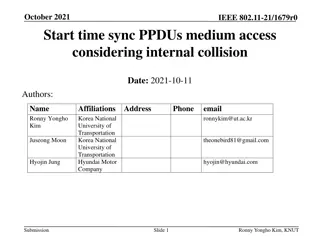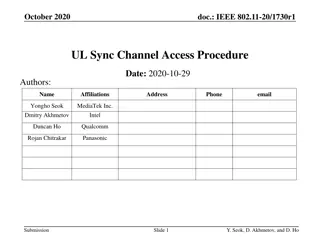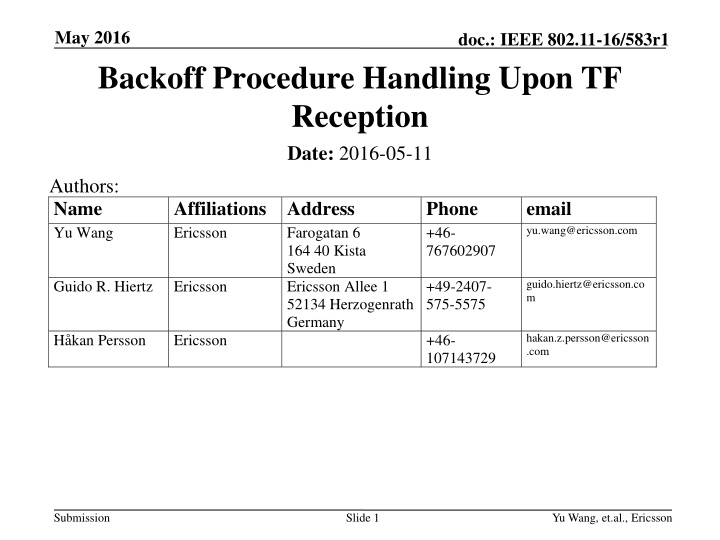
IEEE 802.11-16/583r1 Backoff Procedure Handling Upon TF Reception
This submission discusses modifying the backoff procedure for STAs after receiving a Trigger Frame (TF) to prioritize scheduled channel access, aiming to reduce collision probability and access latency in IEEE 802.11ax.
Download Presentation

Please find below an Image/Link to download the presentation.
The content on the website is provided AS IS for your information and personal use only. It may not be sold, licensed, or shared on other websites without obtaining consent from the author. If you encounter any issues during the download, it is possible that the publisher has removed the file from their server.
You are allowed to download the files provided on this website for personal or commercial use, subject to the condition that they are used lawfully. All files are the property of their respective owners.
The content on the website is provided AS IS for your information and personal use only. It may not be sold, licensed, or shared on other websites without obtaining consent from the author.
E N D
Presentation Transcript
May 2016 doc.: IEEE 802.11-16/583r1 Backoff Procedure Handling Upon TF Reception Date: 2016-05-11 Authors: Name Yu Wang Affiliations Address Ericsson Phone +46- 767602907 email yu.wang@ericsson.com Farogatan 6 164 40 Kista Sweden Ericsson Allee 1 52134 Herzogenrath Germany guido.hiertz@ericsson.co m Guido R. Hiertz Ericsson +49-2407- 575-5575 hakan.z.persson@ericsson .com H kan Persson Ericsson +46- 107143729 Submission Slide 1 Yu Wang, et.al., Ericsson
May 2016 doc.: IEEE 802.11-16/583r1 Abstract The submission discusses the behaviour of STA backoff procedure after receiving a TF (Trigger Frame) We propose a method to modify the current STA backoff behaviour to give higher priority to scheduled channel access Submission Slide 2 Yu Wang, et.al., Ericsson
May 2016 doc.: IEEE 802.11-16/583r1 Background TF has been specified in 802.11ax to trigger data transmission from one or multiple STAs to an AP Scheduled transmission may reduce collision probability The number of nodes contending simultaneously for channel access may be reduced Scheduled MU transmission may reduce access latency Scheduled MU transmissions provide UL access opportunities for multiple devices simultaneously Submission Slide 3 Yu Wang, et.al., Ericsson
May 2016 doc.: IEEE 802.11-16/583r1 Current Behaviour Currently, data transmission may be allowed after channel sensing or by TF scheduling. After data is transmitted, a new value of the slot counter will be drawn for random backoff procedure if the data buffer is not empty Submission Slide 4 Yu Wang, et.al., Ericsson
May 2016 doc.: IEEE 802.11-16/583r1 Problem of Current Behavior When scheduled STA transmissions and sensing based STA channel access coexist, AP and STAs usually have equal opportunities to access channel The number of nodes contending for channel access is not reduced in this case Both collision reduction and access latency reduction may not be realized without prioritizing the scheduled transmissions Submission Slide 5 Yu Wang, et.al., Ericsson
May 2016 doc.: IEEE 802.11-16/583r1 Proposals to Solve the Problem Principle: once a STA obtains UL channel access from a TF, the STA will transmit its UL data during the scheduled period. After this period ends the STA will again start contending for channel access. The sensing based channel access should be down prioritized in order to reduce STA initiated channel contention The proposed method should allow the STA apply a relatively large value of the slot counter after the STA transmits data with scheduled channel access Submission Slide 6 Yu Wang, et.al., Ericsson
May 2016 doc.: IEEE 802.11-16/583r1 Proposed Method A new parameter Sn is proposed to store the slot counter value If data transmission is scheduled by a TF, the parameter Sn is set to Bn. The Bn value is then used in the subsequent channel sensing process Submission Slide 7 Yu Wang, et.al., Ericsson
May 2016 doc.: IEEE 802.11-16/583r1 Simulation Results Scenario: 1 AP, 2/6/10 STAs, UL full buffer traffic, RU are equally distributed among STAs When UL-OFDMA is applied with TF scheduling, the collision probability increases since the AP becomes an additional contending node for channel access Collision probability is reduced significantly by the proposed method NO OFDMA UL OFDMA Proposed method Submission Slide 8 Yu Wang, et.al., Ericsson
May 2016 doc.: IEEE 802.11-16/583r1 Discussion on the Proposed Method Impact to latency The latency may be improved with reduced collision probability In case a STA is scheduled by an AP only once, the proposed method may increase latency in the order of tens of microseconds due to the statistically larger slot counter value Impact to fairness The fairness is kept among ax STAs if all STAs apply the method Since legacy STA can not be scheduled by TF, the fairness between ax STAs and legacy STAs may be improved by the proposed method Submission Slide 9 Yu Wang, Ericsson
May 2016 doc.: IEEE 802.11-16/583r1 Conclusion A method is proposed which modifies the current channel sensing procedure in order to reduce STA initiated channel contention after STAs get scheduled channel access Submission Slide 10 Yu Wang, et.al., Ericsson
May 2016 doc.: IEEE 802.11-16/583r1 Straw Poll Do you believe that scheduled medium access should be prioritized over sensing based medium access? Yes 25 No 3 Abstain 15 Do you believe the method proposed in this contribution is a suitable remedy to achieve fairness between scheduled and sensing based access? Yes 5 No 14 Abstain 18 Submission Slide 11 Yu Wang, et.al., Ericsson


